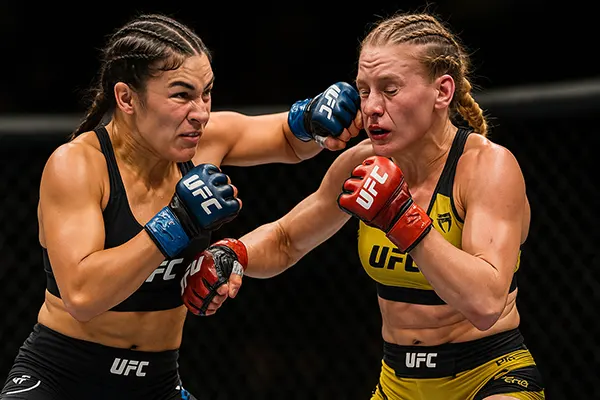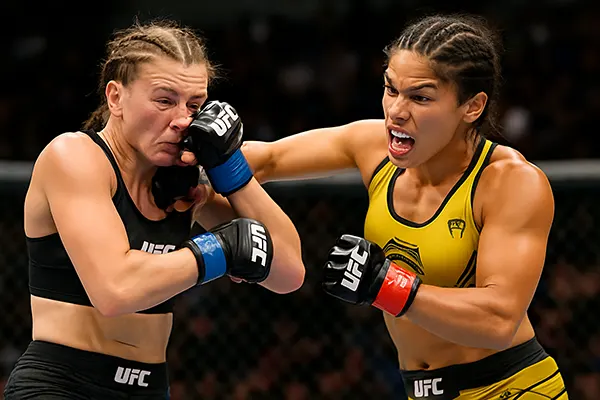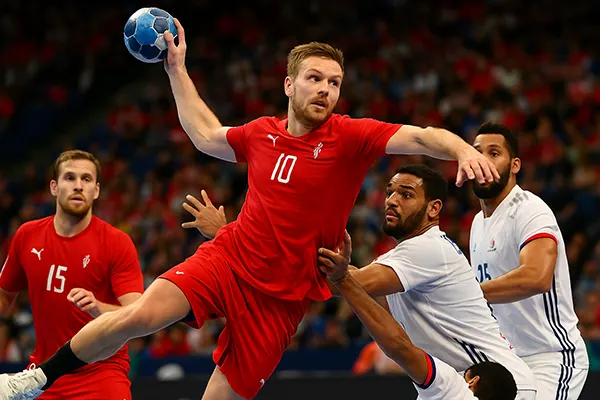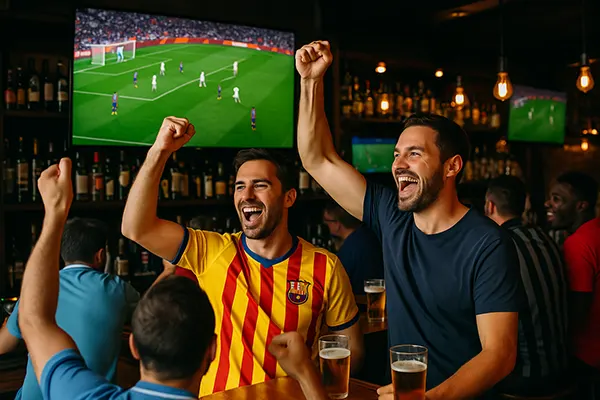Women in MMA: How UFC and Bellator Are Evolving in 2025

In 2025, women’s mixed martial arts (MMA) has reached a new milestone in both visibility and respect. No longer a niche within the sport, female fighters are headlining events, signing lucrative deals, and shaping the future of promotions like UFC and Bellator. This transformation is not sudden—it’s the result of years of talent, tenacity, and strategic changes within the industry.
New Champions and Shifting Divisions
The competitive landscape in women’s MMA has never been more dynamic. Fighters like Zhang Weili, Alexa Grasso, and Liz Carmouche have not only defended titles but redefined entire divisions. These athletes exhibit technical brilliance and striking endurance, earning both fan admiration and critical acclaim.
In 2025, several promotions have reconsidered weight class structures to create more competitive balance. Bellator has seen particular growth in its atomweight and bantamweight divisions, thanks to talent imports from Invicta and ONE Championship. UFC continues refining its matchmaking to bring title contenders into focus faster, especially in the flyweight division.
Emerging names like Erin Blanchfield and Tatiana Suarez have become household names, demonstrating the depth of talent and the potential for longstanding rivalries. These new champions are not just excellent athletes—they’re also marketable figures driving media attention and sponsorship growth.
Changing Training Philosophies and Coaching
Coaching approaches for female fighters are evolving in tandem with the sport’s maturation. Top gyms are tailoring strength and conditioning programs to support endurance and recovery, addressing past shortcomings in training equality. Personalisation has become the standard, with fighters benefitting from sport science and nutrition advancements.
Moreover, more women are stepping into coaching roles themselves. From cornering fights to running their own camps, veteran athletes are shaping the next generation of talent. This shift ensures that mentorship is informed by direct experience inside the octagon.
Cross-training is also expanding. Women now frequently transition between wrestling, Brazilian jiu-jitsu, and Muay Thai academies to build holistic skill sets. The result: more versatile and unpredictable performances on fight night.
Promotion, Contracts, and Fan Engagement
UFC and Bellator have overhauled their promotional strategies. Gone are the days when female fights were considered undercards; now, they anchor pay-per-view events and dominate marketing campaigns. This change is not merely progressive—it’s profitable, with female-led events often outperforming expectations.
Contract negotiations reflect this new reality. Fighters like Kayla Harrison and Rose Namajunas have set precedents with multi-fight agreements that include performance-based incentives, equity options, and media responsibilities. Transparency and fairness in contract terms have become a focal point for both promotions and athletes.
Fan engagement is thriving on social media, with women fighters leading the charge in building loyal followings. Fighters such as Valentina Shevchenko and Mackenzie Dern connect directly with audiences through behind-the-scenes content and live Q&As, humanising the sport and broadening its appeal.
Media Coverage and Sponsorship Opportunities
Media coverage of women’s MMA has grown not only in volume but in depth. Outlets like ESPN, MMA Fighting, and BT Sport now dedicate regular segments and interviews to female fighters, analysing technique, strategy, and backstories with the same seriousness afforded to their male counterparts.
Sponsorship opportunities are also multiplying. Apparel brands, energy drink companies, and even financial services are entering the arena, recognising the influence and reach of top-tier female athletes. This economic empowerment enables fighters to train full-time without financial compromise.
Podcasts and YouTube channels run by fighters themselves are also booming. They offer authentic perspectives and add layers of commentary that resonate with fans who crave insider knowledge beyond the cage.

The Globalisation of Women’s MMA
Women’s MMA is no longer confined to the United States or Brazil. Fighters from Eastern Europe, Central Asia, and Africa are increasingly joining the global stage. UFC and Bellator actively scout international talent, leading to more diverse events and broader global appeal.
In 2025, Dagestani and Ukrainian fighters are gaining traction for their strong wrestling bases, while Thai fighters bring elite striking techniques honed in Muay Thai rings. This diversification challenges existing norms and raises the competitive bar worldwide.
Cross-promotional events are also contributing to global growth. Collaborations between UFC, Bellator, and regional organisations like Rizin and KSW are introducing audiences to new talent pools. These partnerships also open doors for women to participate in Grand Prix formats and international tournaments.
Grassroots Development and Infrastructure
The rise of women’s MMA at the elite level has had a trickle-down effect on grassroots participation. Amateur leagues, especially in the UK, Canada, and Australia, are reporting record enrolment numbers among women. These organisations are crucial for developing future champions in a structured and safe environment.
Infrastructure investments are also becoming more gender-inclusive. From locker room design to sports medicine access, gyms and event organisers are beginning to account for the specific needs of female athletes. This change not only promotes fairness but enhances performance and longevity in the sport.
Scholarship programs and community outreach initiatives are helping bridge socio-economic gaps, allowing young girls from underserved backgrounds to train professionally. These steps are essential to ensuring the long-term sustainability and inclusivity of the sport.




